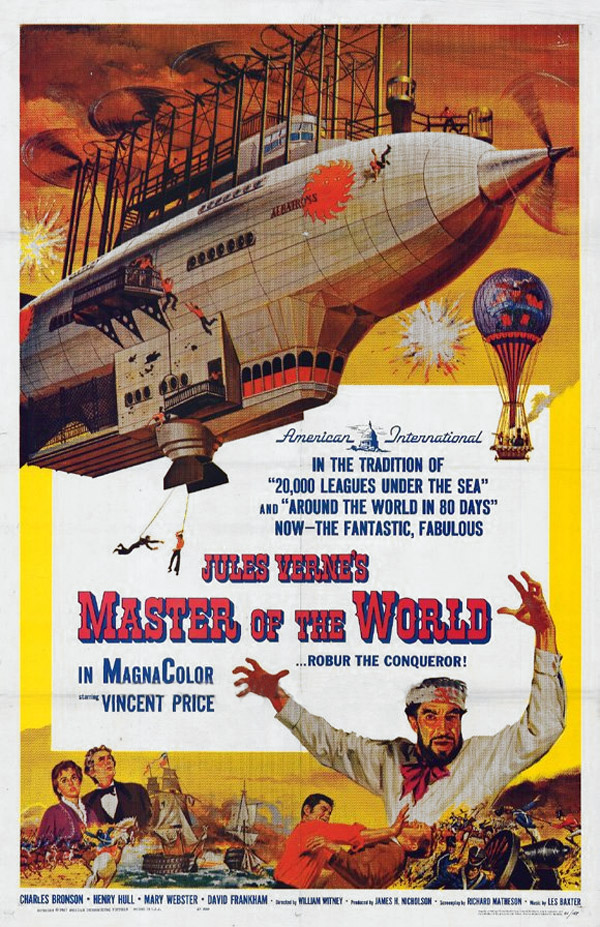Previous FilmMars Needs Women
Next FilmMatango
Master Of The World 1961
 | In 1868, an American scientist and his team become hostages of fanatical pacifist Robur who uses his airship Albatross to destroy military targets on Earth. |
The Cast
| Vincent Price | - | Robur |
| Charles Bronson | - | John Strock |
| Henry Hull | - | Prudent |
| Mary Webster | - | Dorothy Prudent |
| David Frankham | - | Phillip Evans |
| Richard Harrison | - | Alistair |
| Vito Scotti | - | Topage |
| Wally Campo | - | Turner |
Film Trivia
Screenwriter Richard Matheson has said in interviews that he thought Charles Bronson was badly miscast.
Richard Matheson combined two stories by Jules Verne for this screenplay: "Clipper of the Clouds" (1886) and its sequel "Master of the World" (1904).
American International had planned on doing a sequel to this film. Concept drawings and even concept models were reportedly made. The sequel was not produced.
In the original story the craft could fly, travel on land like an automobile, float like a ship, and go under the water like a submarine.
Although the end titles credit the song "Master of the World" with music by Les Baxter, lyrics by Lenny Adelson and sung by Darryl Stevens, there is actually no song in the released film. As a matter of interest, Intrada for its 2009 soundtrack CD managed to trace the missing song, which turns out to be a haunting, alternate version of the end title. After the song was dropped, it was still credited on screen, but the chosen end title has just orchestra and choir. The lost lyrics go as follows: "Any man is Master of the World / If he has wandered in the world / And found his love / And of all the secrets of the earth / He has the only treasure worth / Dreaming of / If he rules just one heart a man is a king / It seems as though his soul has taken wing / And like the stars that fly on high above the earth / A man is Master of the World / When he is loved!"
Curiously, this movie and Disney's 1954 version of 20,000 Leagues Under the Sea have more similarities than the two (technically three) Jules Verne's books that the movies are based on.
The three-and-a-half-minute pre-credits sequence is entirely made up of stock footage of early attempts at functioning aircraft.
Extensive archive footage from Four Feathers (1939) is used at point in the story.